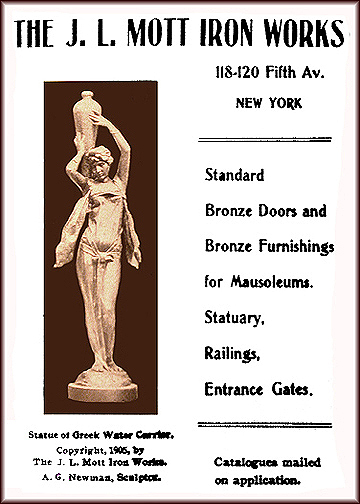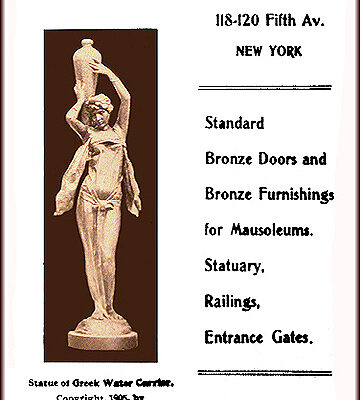In early 2005, I wrote two articles concerning Johnson City’s charming “Lady of the Fountain.” This bronze statue stood in Fountain Square atop a water fountain between 1909 and 1937 and at Roosevelt (Memorial) Stadium for about six additional years.
In 1943, the Lady began a 40-year residency in a garden at the Zollicoffer family home in Henderson, NC. On Sept. 20, 1983, it made a heralded return to the city. I recently received correspondence from Carol Grissom, Senior Objects Conservator of the Smithsonian Institute, who shed new light on our prized artifact that represents a large chunk of Johnson City’s history.
Ms. Grissom stated that while writing a book, Zinc Sculpture in America: 1850-1950, she located the two Johnson City Press articles on my website: “I immediately recognized it as a statue sold as the ‘Greek Water Carrier.’ The Lenoir City foundry mentioned in your article may have made the cast iron fountain base, but I can guarantee that the statue was made in New York.”
Carol was delighted to learn that Johnson City possesses a rare essentially intact statue. She hopes to make a trip here soon to examine it. Ms. Grissom’s forthcoming publication contains this entry: “Greek Water Carrier with an urn held in both hands above her head and drapery flaring outward from her shoulders on each side. Water issued from the mouth of the urn and ran down the figure. This elegant figure was sculptured by Alan George Newman (1875–1940) and copyrighted in 1905 by the J.L. Mott Iron Works (118-120 Fifth Avenue, NY).”

According to Carol: “This company was known mostly for bathroom fixtures, but had a fairly active production of ornamental cast-iron fountains during the nineteenth and early twentieth centuries.” She attached a Mott advertisement from a 1909 edition of “The Monumental News,” a sculpture journal that operated between 1889 and 1938. The publication carries a picture of a “Greek Water Carrier,” which appears to be identical to our “Lady.”
Ms. Grissom further avowed: “The firm probably did not actually make the zinc statues, but instead subcontracted them to M.J. Seelig & Co., a zinc foundry in Williamsburg, New York, an area now part of Brooklyn and fashionable among young people and artists. Mr. Newman was probably best known for his statue of a Spanish-American Soldier, available from several foundries in bronze but also sold by Mott in zinc. The ‘Greek Water Carrier’ is one of the few statues introduced in the twentieth century, as generally the company sold replicas of the same statues from about 1875 onward.”
Only three “Carrier” statues, including the one in Johnson City, are believed to be in existence today. Milton Hershey, founder of the Hershey chocolate empire, purchased one in 1913 for the front of his home. It was subsequently moved from Hershey, PA to nearby Harrisburg. The magnate also procured a Spanish-American Soldier statue. The cast zinc sculpture, known as “Rebecca Fountain,” was painted gray and installed on a concrete pedestal. Today, it sits on a concrete block with the portion below the knees missing.
A second statue once stood at the National Park Seminary, a school for young women established in 1894 in Silver Spring, MD. It stood atop a low pedestal in a garden between a sorority house known as Chiopi and the Chapel. It was stolen in 1996, prompting a reward for its return.
Ms. Grissom offered some concluding comments: “As far as I know, your city’s statue is the only one of its kind that remains in public hands intact, discounting the damaged one in Hershey Park. Your ‘Lady’ is also important from an art historical standpoint because a known artist modeled it. In many ways, your copy is unique. Personally, I find it a rather charming statue and something of a period piece, evocative of the early 20th century.”
Let me extend a heartfelt “thank you” from Johnson Citians to Ms. Grissom for sharing the Lady of the Fountain’s birthright with us.

Comments are closed.